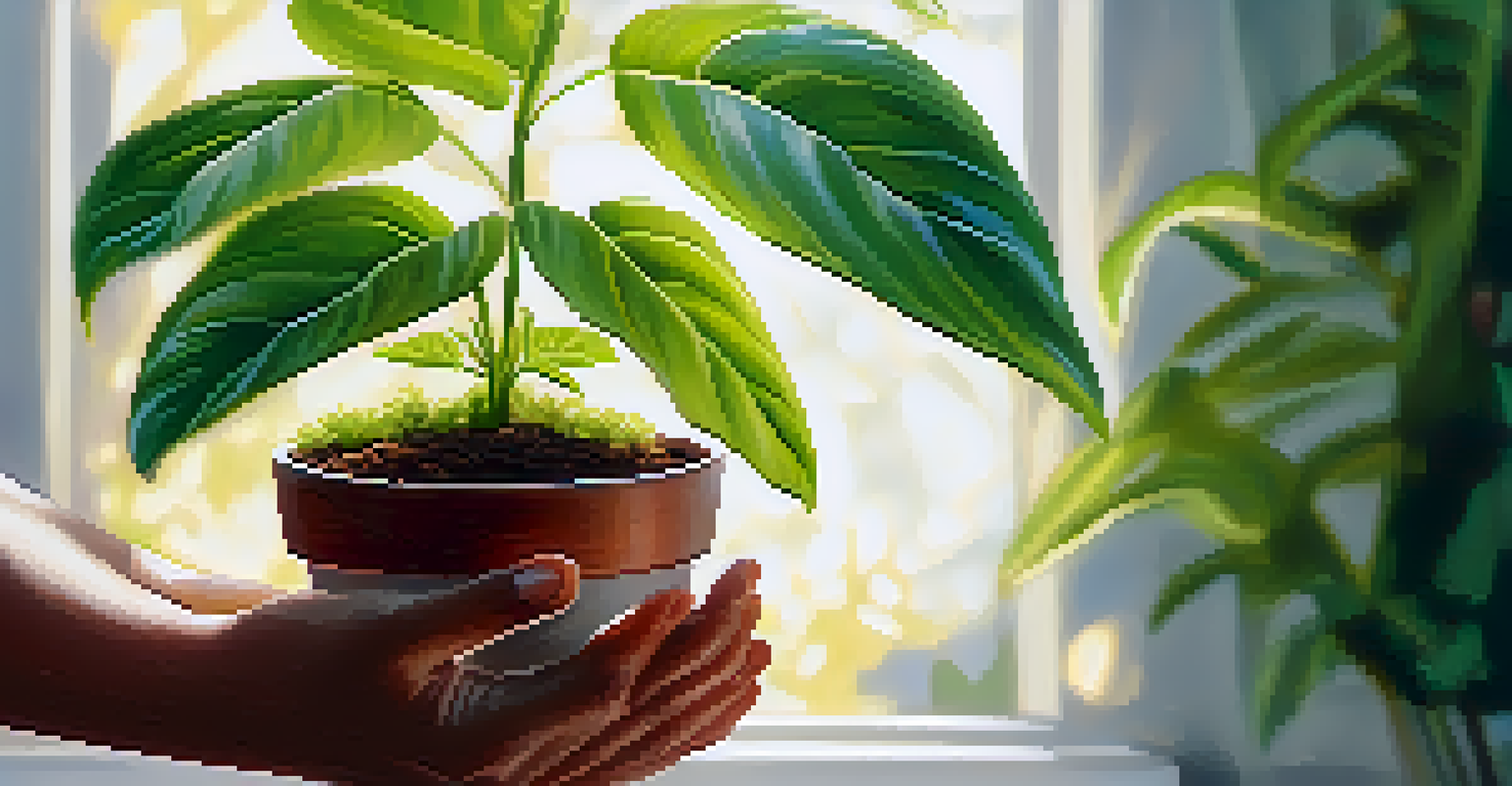The Science Behind Entheogens and Grief Processing Explained

Understanding Grief: A Complex Emotional Response
Grief is a deeply personal and often overwhelming experience that affects individuals in various ways. It can manifest as sadness, anger, confusion, or even physical symptoms, making it a complex emotional response to loss. As we navigate through grief, it’s essential to recognize that there is no right or wrong way to feel, and each journey is unique.
Grief is not a sign of weakness, nor a lack of faith... It is the price of love.
In many cultures, grief is not just an emotional struggle but also a social one, often influenced by traditions and community support. This context can play a crucial role in how we process our feelings and cope with loss. Understanding this complexity is the first step toward healing, as it allows us to validate our emotions and seek appropriate support.
Furthermore, the process of grieving can be long and nonlinear, with individuals experiencing waves of emotions that can resurface unexpectedly. This unpredictability can be frustrating, but it's important to remember that these feelings are a natural part of the healing journey.
What Are Entheogens and Their Historical Use?
Entheogens are substances that have been used for centuries in various cultures for spiritual and healing purposes. Derived from the Greek words 'entheos' (meaning 'to be inspired or possessed by a god') and 'genesis' (meaning 'to generate'), these substances are often associated with altered states of consciousness. Examples include psilocybin mushrooms, ayahuasca, and peyote, each used in ritualistic settings to foster connection with the divine or the self.

Historically, many indigenous cultures have embraced entheogens as sacred tools for healing and insight. They are often integrated into ceremonies where participants seek guidance, emotional release, or a deeper understanding of their experiences, including grief. This ancient practice highlights the potential of entheogens to facilitate profound emotional and spiritual healing.
Grief is a Unique Journey
Each person's experience of grief is personal and can manifest in various emotional and physical ways.
In modern times, there has been a resurgence of interest in these substances, particularly in therapeutic settings. Researchers are exploring their effects on mental health conditions, including grief, anxiety, and depression, suggesting that entheogens may provide a unique pathway for emotional processing.
The Science of Entheogens: How They Affect the Brain
When ingested, entheogens interact with our brain's neurotransmitter systems, particularly serotonin receptors. This interaction can lead to altered perceptions, heightened emotions, and even profound insights into one’s life and experiences. Research shows that these substances can facilitate connections between different brain regions, promoting a sense of unity and interconnectedness.
The wound is the place where the Light enters you.
This shift in brain connectivity may help individuals break free from rigid thought patterns often associated with grief. By allowing for new perspectives and emotional release, entheogens can open up pathways to healing that may not be accessible through conventional therapy alone. This neuroplasticity can be a game changer for those struggling to process their loss.
Additionally, the experience of taking entheogens often includes a sense of transcendence, where individuals feel a deep connection to themselves, others, and the universe. This can provide comfort during the grieving process, as individuals may find solace in the idea that they are part of something larger, easing the burden of their loss.
Entheogens and Emotional Release: A Therapeutic Approach
One of the most significant benefits of using entheogens in a therapeutic context is their ability to facilitate emotional release. Many individuals report experiencing a cathartic release of pent-up emotions during these sessions, allowing them to confront feelings they may have been avoiding. This release can be incredibly healing, enabling a deeper understanding of one’s grief.
Therapists often guide individuals through this process, creating a safe and supportive environment for exploration. By integrating techniques such as guided imagery or breathwork, they help clients navigate their emotional landscapes during the experience. This combination of entheogenic substances and therapeutic support can lead to lasting change.
Entheogens Aid Emotional Healing
Entheogens have historical roots in spiritual practices and are now being explored for their therapeutic potential in addressing grief.
Moreover, the insights gained during these experiences often extend beyond the session itself. Many individuals find that they can apply the lessons learned to their daily lives, fostering resilience and a healthier relationship with their grief.
Potential Risks and Considerations of Entheogen Use
While entheogens can provide significant benefits, it’s crucial to approach their use with caution. Not everyone is a suitable candidate for these substances, particularly those with a history of mental health issues like schizophrenia or bipolar disorder. The altered states of consciousness can sometimes exacerbate underlying conditions, making it essential to assess individual circumstances.
Additionally, the setting in which entheogens are consumed plays a vital role in the experience. Taking these substances in a chaotic or unsafe environment can lead to negative experiences, known as 'bad trips.' It’s important to have a supportive guide or therapist who can help navigate any challenging moments during the experience.
Lastly, legal considerations are also a factor, as the status of many entheogens varies by location. It’s important for individuals to stay informed about the laws in their area and seek guidance from qualified professionals when considering entheogen-assisted therapy.
Integrating Entheogen Experiences into Grief Healing
After an entheogenic experience, integrating the insights gained into everyday life is crucial for lasting healing. This process can involve journaling, engaging in creative expression, or participating in support groups where individuals can share their experiences. These activities can help solidify the lessons learned and translate them into actionable steps toward emotional wellness.
Many find that discussing their experiences with a therapist or within a supportive community can provide additional clarity and support. These conversations often foster deeper connections and understanding, helping individuals navigate their grief more effectively. The shared experience of using entheogens can create a sense of camaraderie among those who have walked similar paths.
Integration is Key to Healing
Post-experience integration through journaling and support groups is crucial for translating insights into lasting emotional wellness.
Moreover, self-care practices following an entheogenic experience are essential. This can include mindfulness techniques, physical activity, or spending time in nature, all of which can support emotional stability and well-being as individuals continue their healing journey.
The Future of Entheogens in Grief Therapy
As research into the therapeutic potential of entheogens continues to grow, there is a promising future for their integration into grief therapy. Clinical studies are increasingly exploring how these substances can facilitate emotional healing and provide support for individuals navigating loss. This evolving field could reshape our understanding of grief and mental health.
Moreover, as societal perceptions of entheogens shift, there may be greater acceptance and accessibility for those seeking alternative healing methods. This could lead to more comprehensive treatment options that incorporate entheogens alongside traditional therapies, providing individuals with a broader toolkit for managing grief.

Ultimately, the future holds the potential for a more holistic approach to grief therapy, where entheogens play a vital role in fostering emotional resilience and deeper healing. As we continue to explore the intersections of science, spirituality, and mental health, the possibilities for healing are exciting and hopeful.